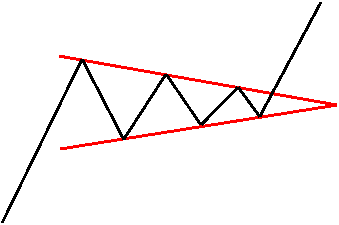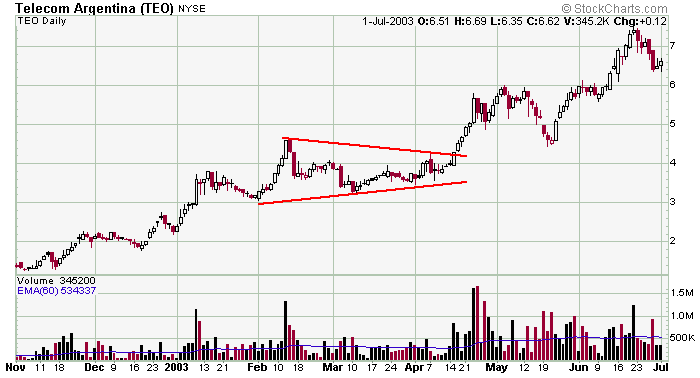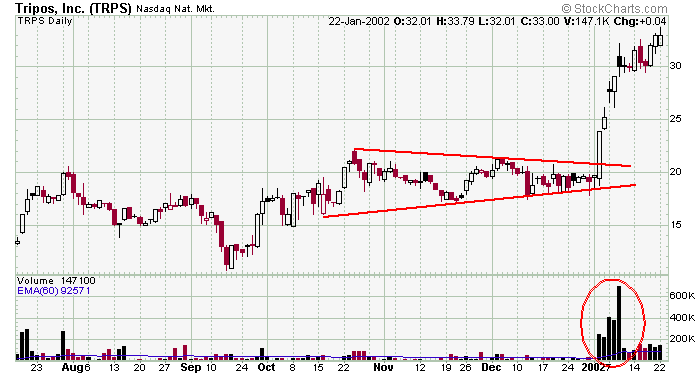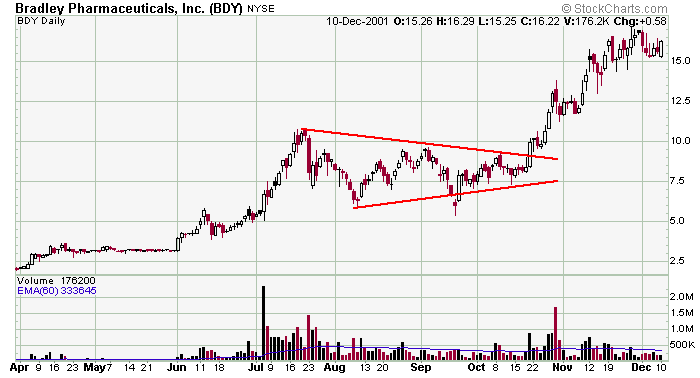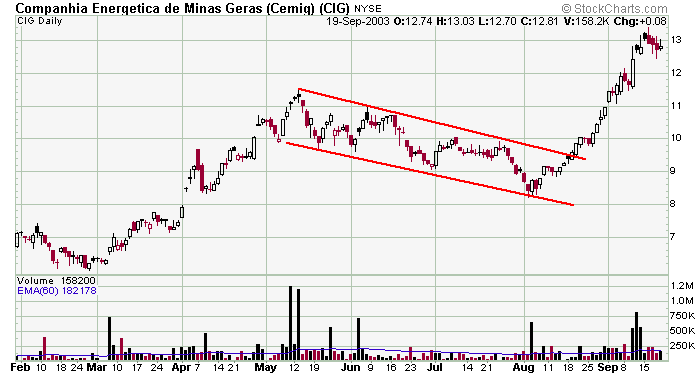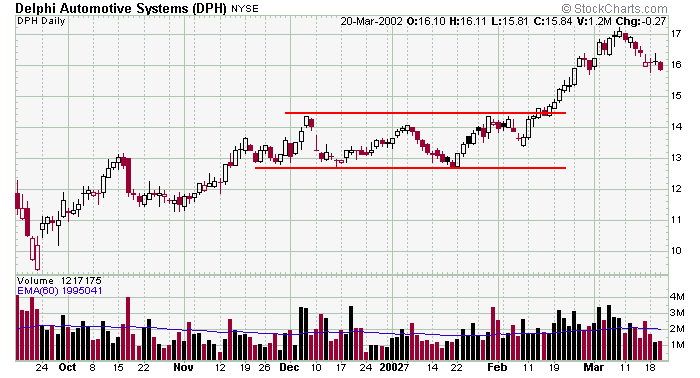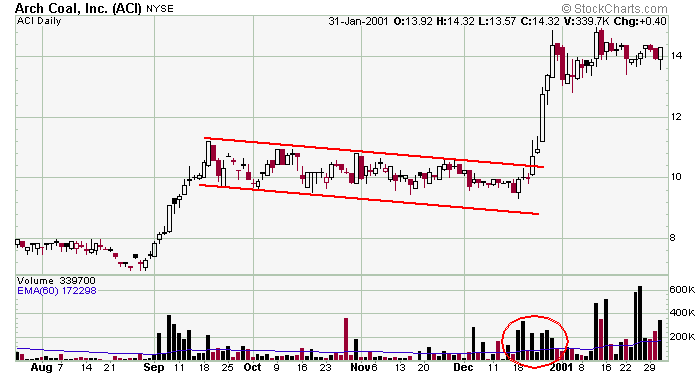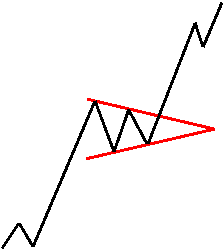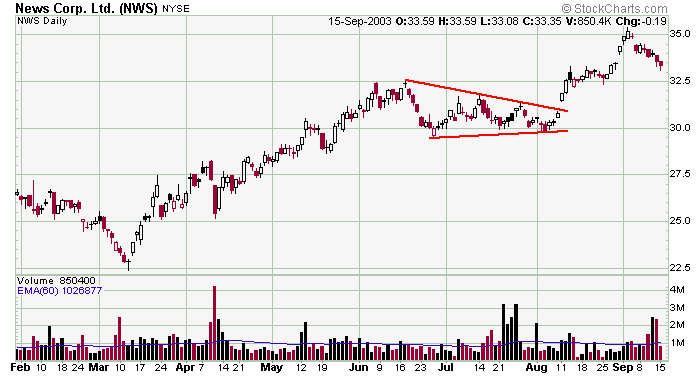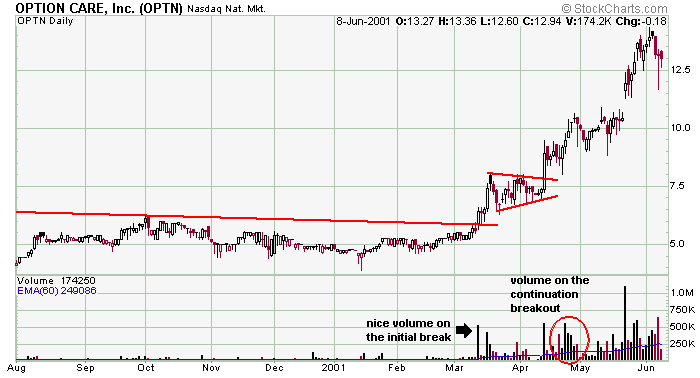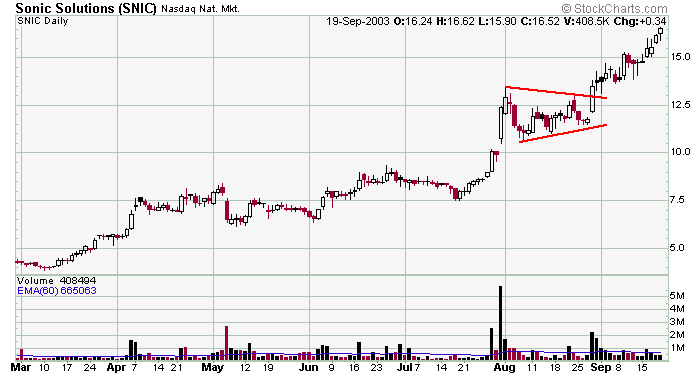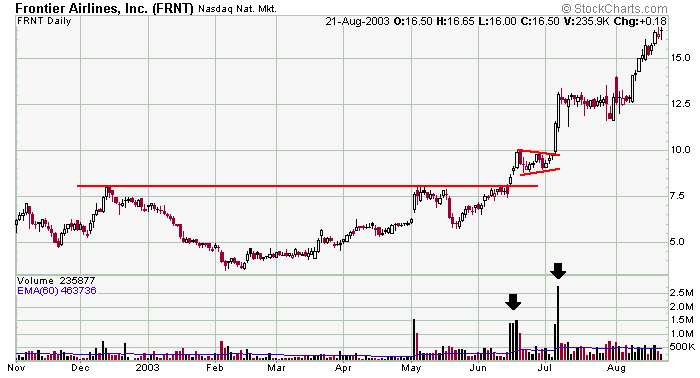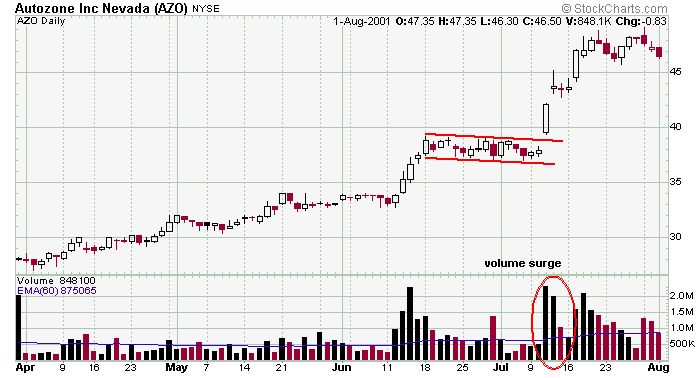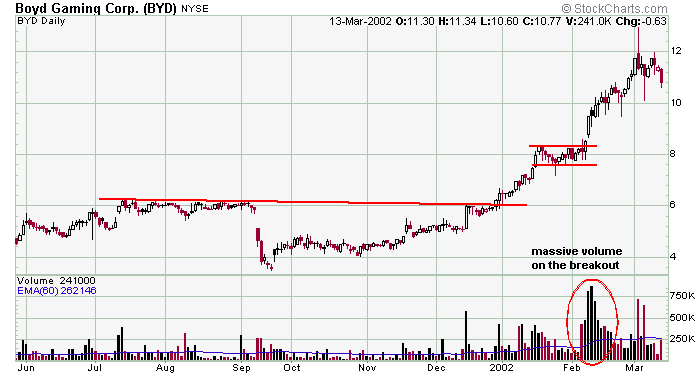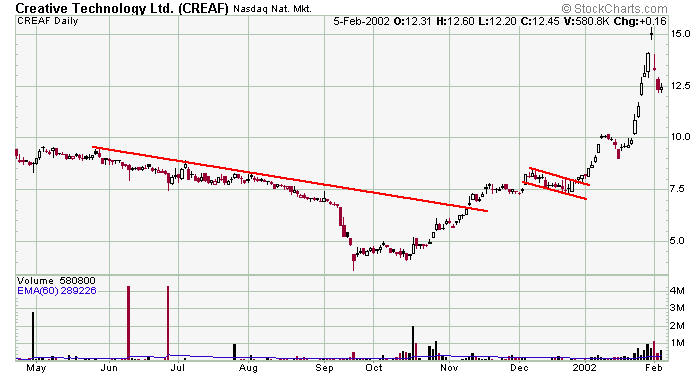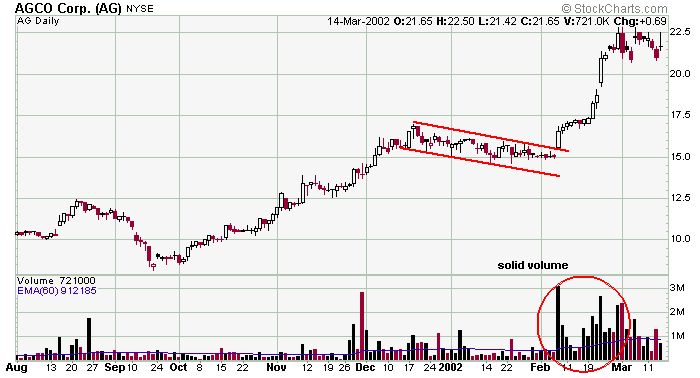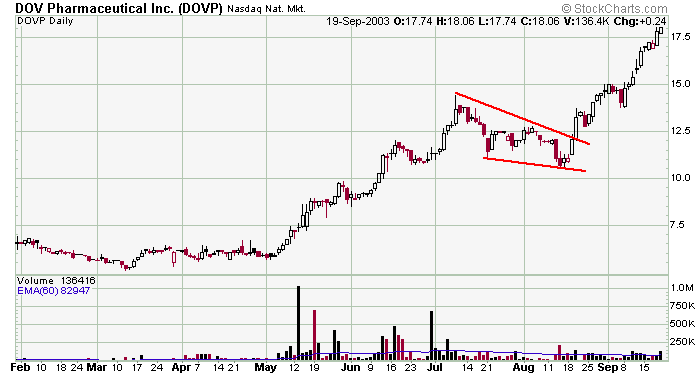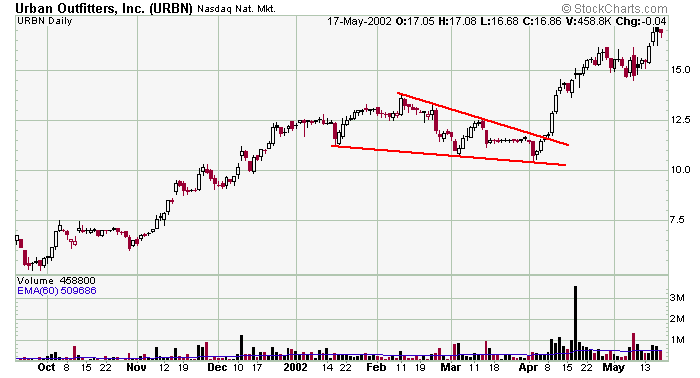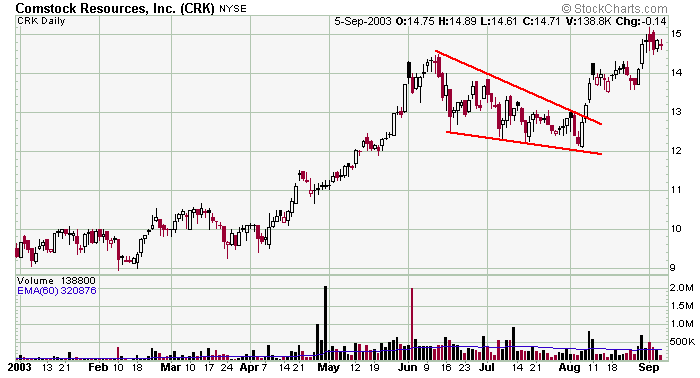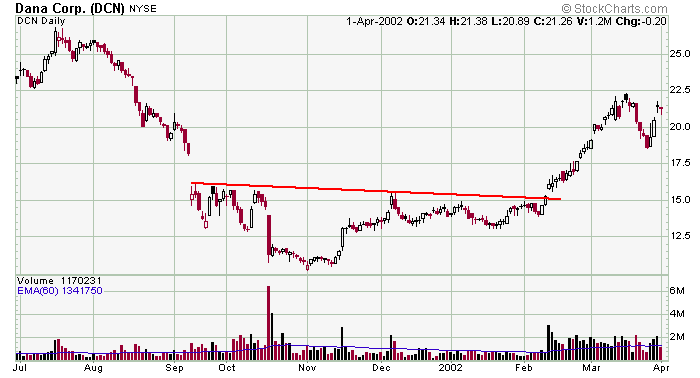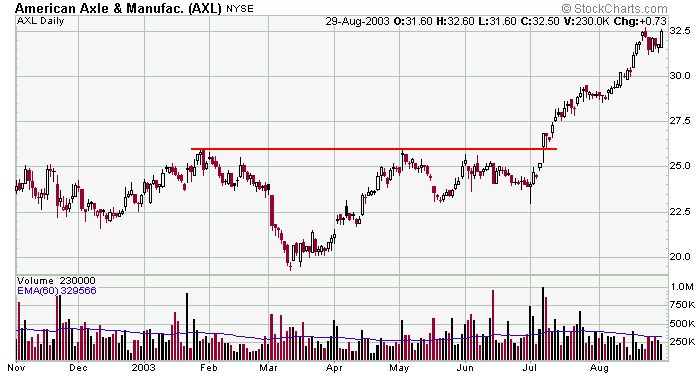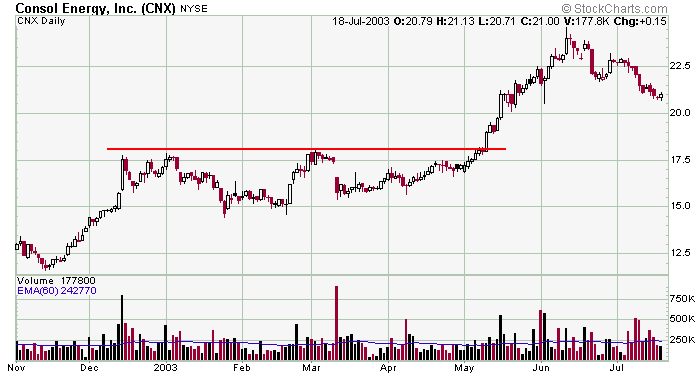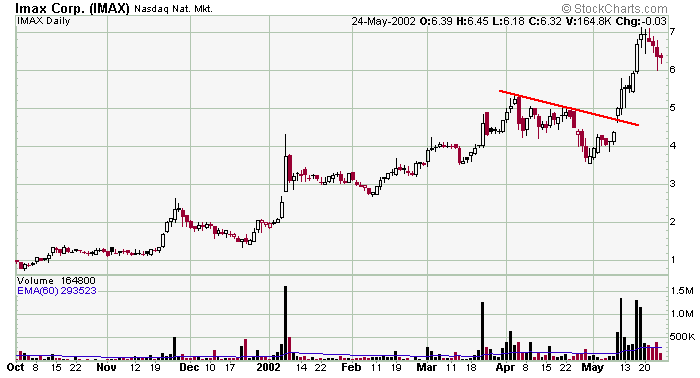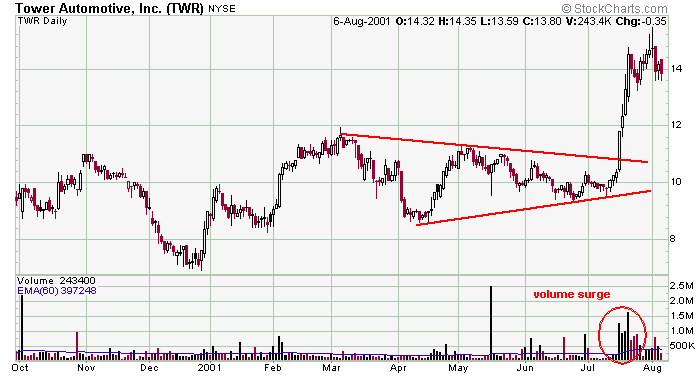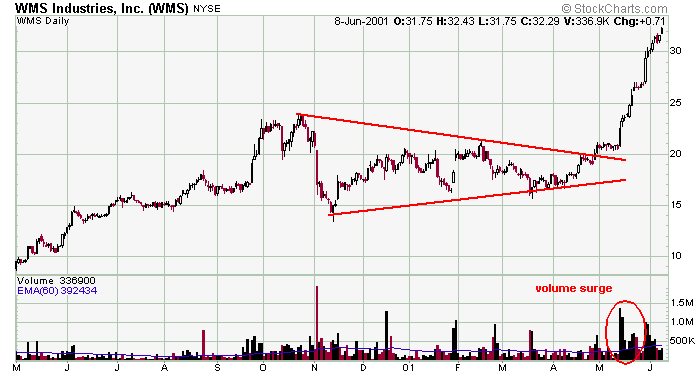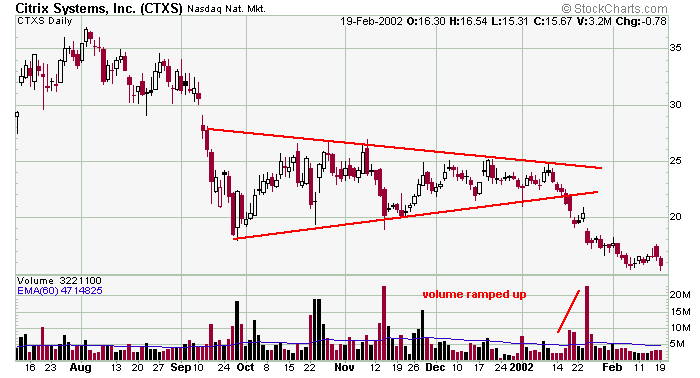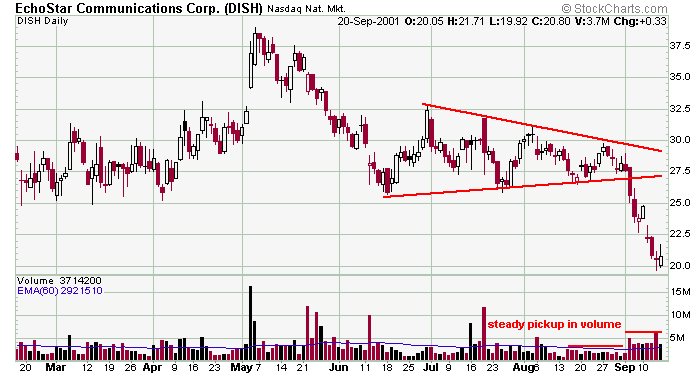Bullish Head & Shoulder Bottom
Bullish head & shoulders bottoms are powerful and reliable reversal patterns that appear as large basing periods after a substantial downtrend. Its completion signals a trend reversal. Three successive troughs characterize the pattern with the middle one being the deepest and the two outside ones being shallower and approximately equal.
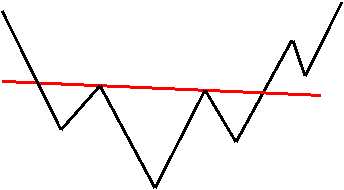
The above chart illustrates the sequence of events that unfold as the pattern develops. The left shoulder is formed as just another sell-off and bounce within a long downtrend. The stock then falls and makes another lower low. This action, which forms the left shoulder and first half of the head is no different than what is expected with a stock in a typical downtrend. And at this point in time, there is no way for the trader to know that a head & shoulders bottom is forming. The stock then begins its usual “bounce within a downtrend,” but not only does the stock trade above the left shoulder, it rallies to, or close to, the same level as the previous bounce. The head has now been formed. This is the first sign that the selling pressure may be abating and the stock seems to be gaining strength. A trendline, called the neckline, can be drawn between the two troughs. The stock then falls again but the imbalance of supply and demand is such that the stock does not make a lower low. This is the second sign the downtrend may be nearing an end. A rally from this shallower dip (right shoulder) through the neckline with a volume surge would mark a successful reversal of the downtrend.
Like all other upside breaks, a surge in volume must accompany the breakout. Failure to accomplish this doesn't necessarily mean the pattern will be a complete failure, but a red flag is raised. The stock may have broken prematurely due to overall market strength. The stock may just need to pull back to do more “work” (form a second right shoulder) before the real breakout occurs. Remember, a head & shoulders bottom occurs after a weak stock has been in a long downtrend. There really needs to be a massive amount of buying to reverse the downtrend.
The character and extent of the expected price movement upon breakage depends on several factors. Typically it is equal to the distance from the neckline to the extreme point of the head. But this is just a guideline. Head and shoulders is a reversal pattern, so there must be a significant move to reverse. A small move into the pattern usually results in a small rally upon break. Also, the rally tends to be the mirror image of the preceding drop. This means a quick and violent drop foreshadows a quick rally.
Duration of the entire pattern (i.e. how long the stock trades below the neckline) also plays a role. The longer the stock trades down there, the greater the chance that most of the disgruntled stockholders will have sold when a breakout happens. This means there will not be many investors who are looking to get out even; they have already gotten out.
Whether a stock pulls back to the neckline after breaking out can depend on the overall market. If the entire market is strong, there probably will be no pullback. If on the other hand the market is weak at the same time a stock completes its pattern, then a pullback is likely.
Example :
Head & shoulder bottom patterns rarely fit the textbook description, and ANAD is a good example of that. Typically you'd like the pattern to be bigger, but in this case the neckline was fairly easy to determine and the volume surge on the breakout sealed the deal. Absent the volume surge, the stock most likely would have pulled right back into the pattern.
MACR formed a nice head & shoulder bottom pattern in the fall of 2001. Notice the volume pick up on the right side of the head, and fall off on the left side of the right shoulder. The volume surged when the stock exploded out of the pattern.
Whole numbers are often significant numbers, so when AAPL formed a head & shoulder bottom pattern with its neckline at 20, the astute trader needs to pay more attention. The move down into the pattern was 5 points (from 25 down to 20) and the size of the head was 5 points (15 to 20), so the projected move out of the pattern was 5 points (from 20 to 25). We didn't quite get it (probably because there wasn't much volume on the breakout), but we did get a nice 20% move nevertheless.





